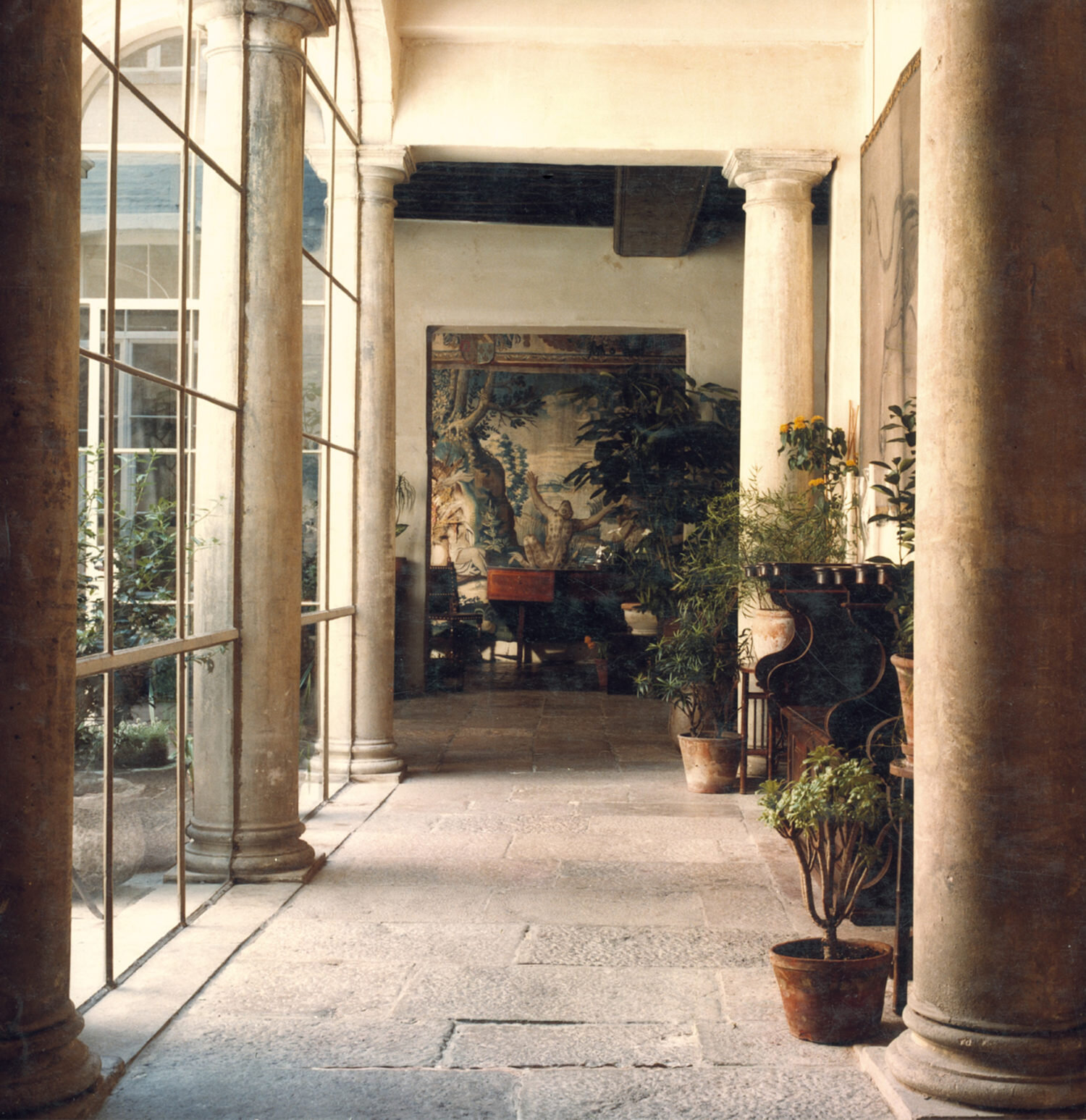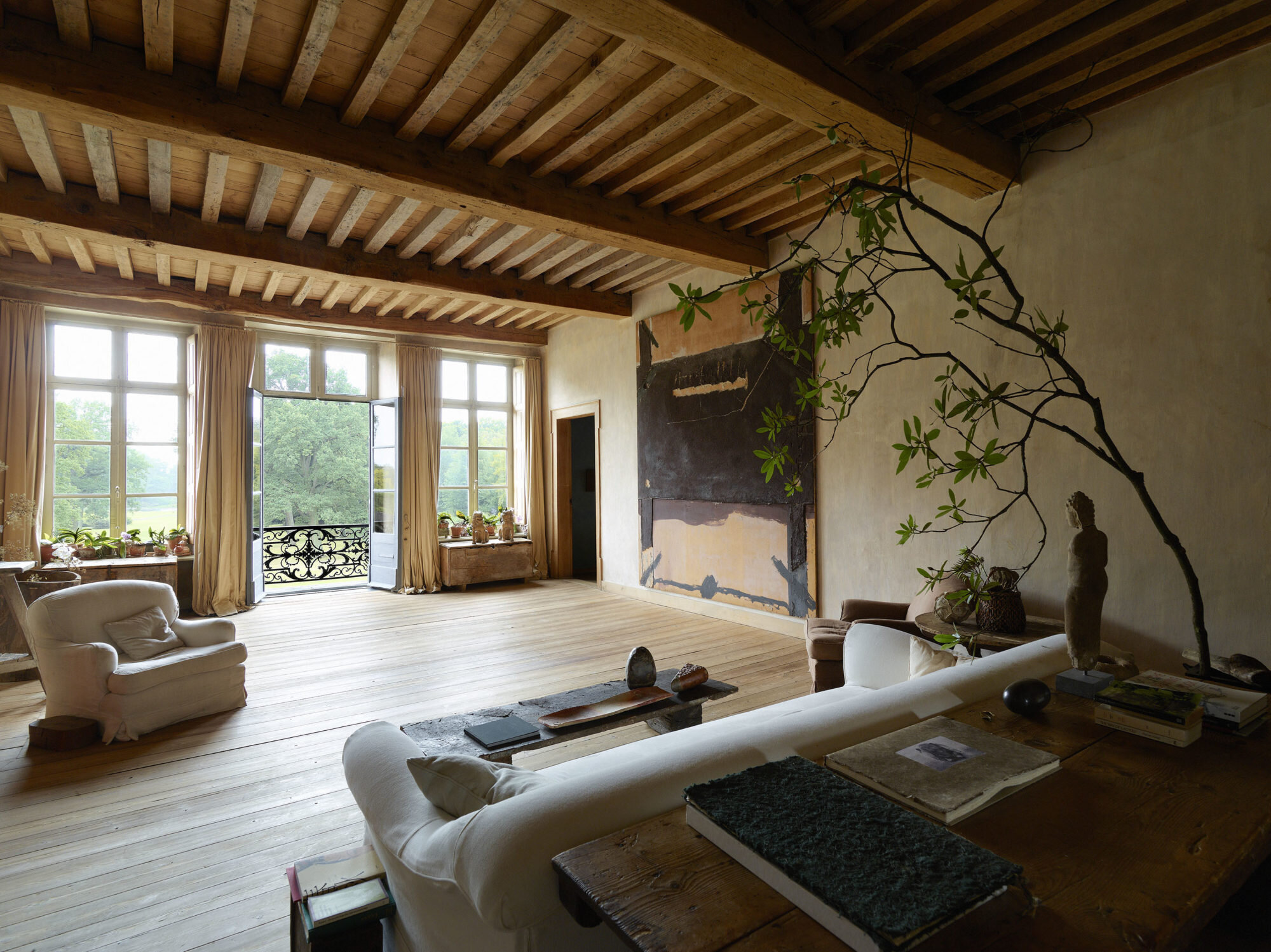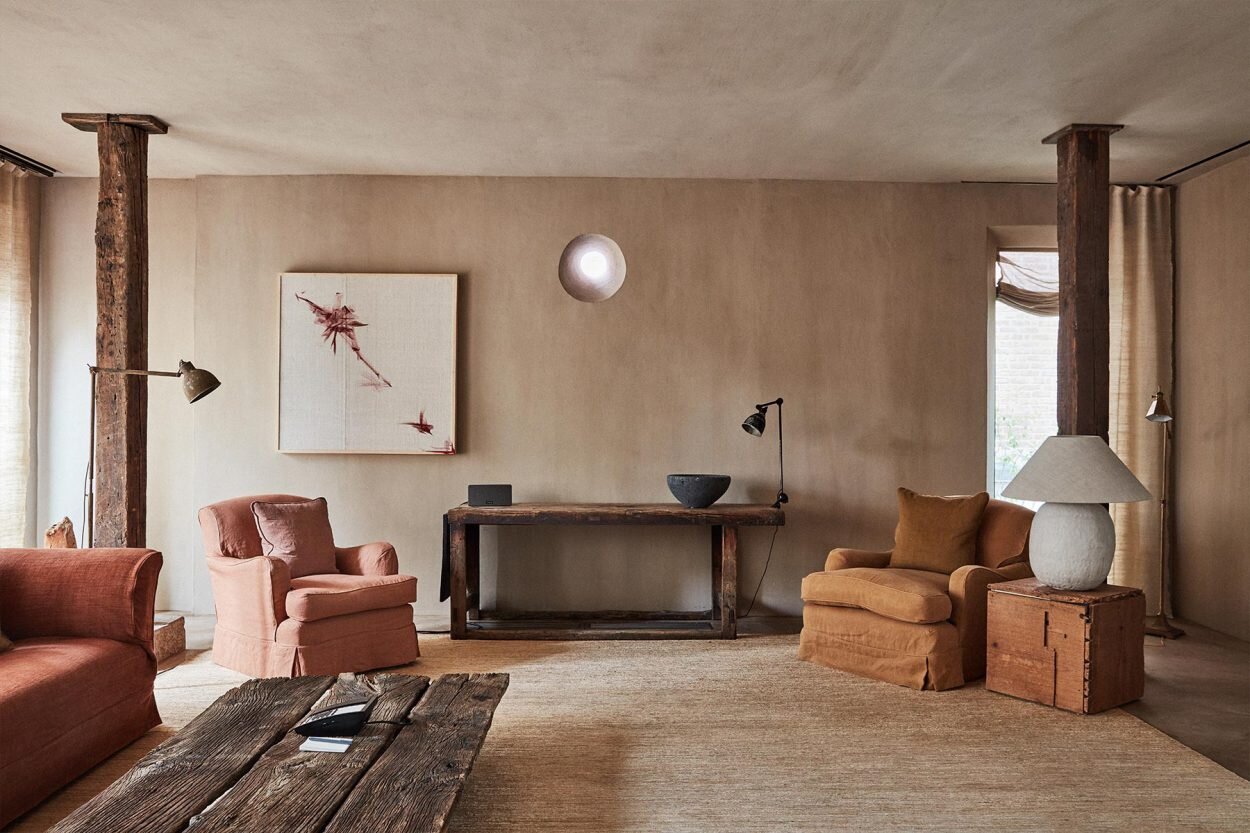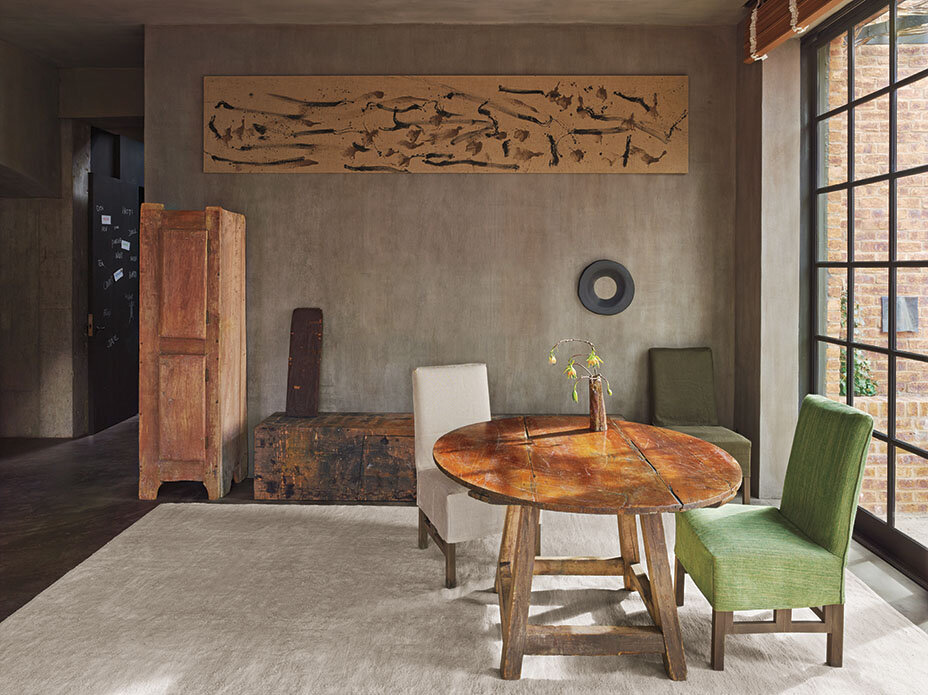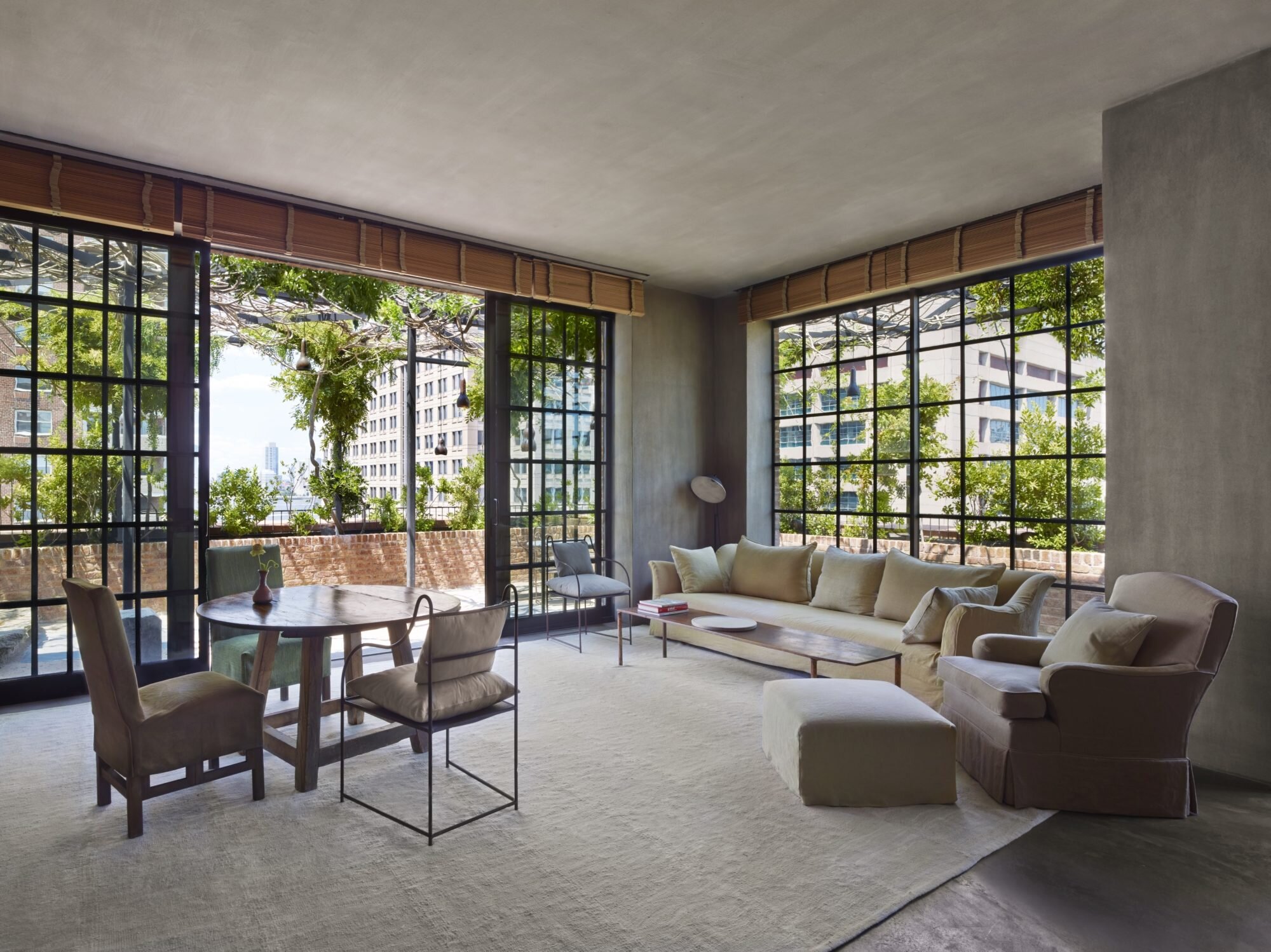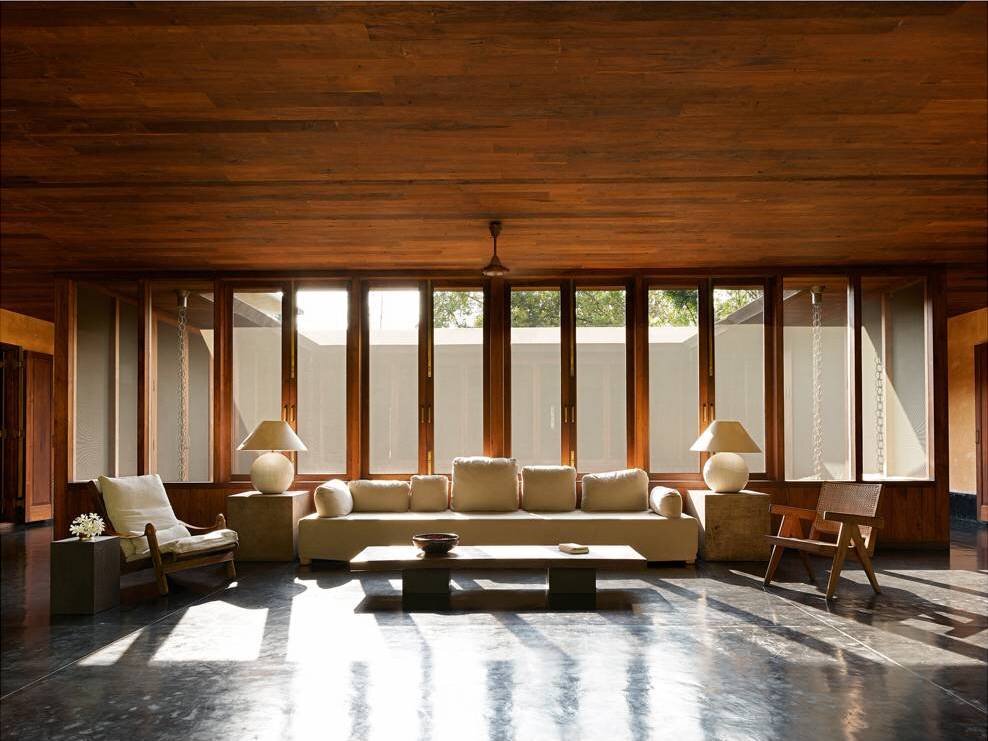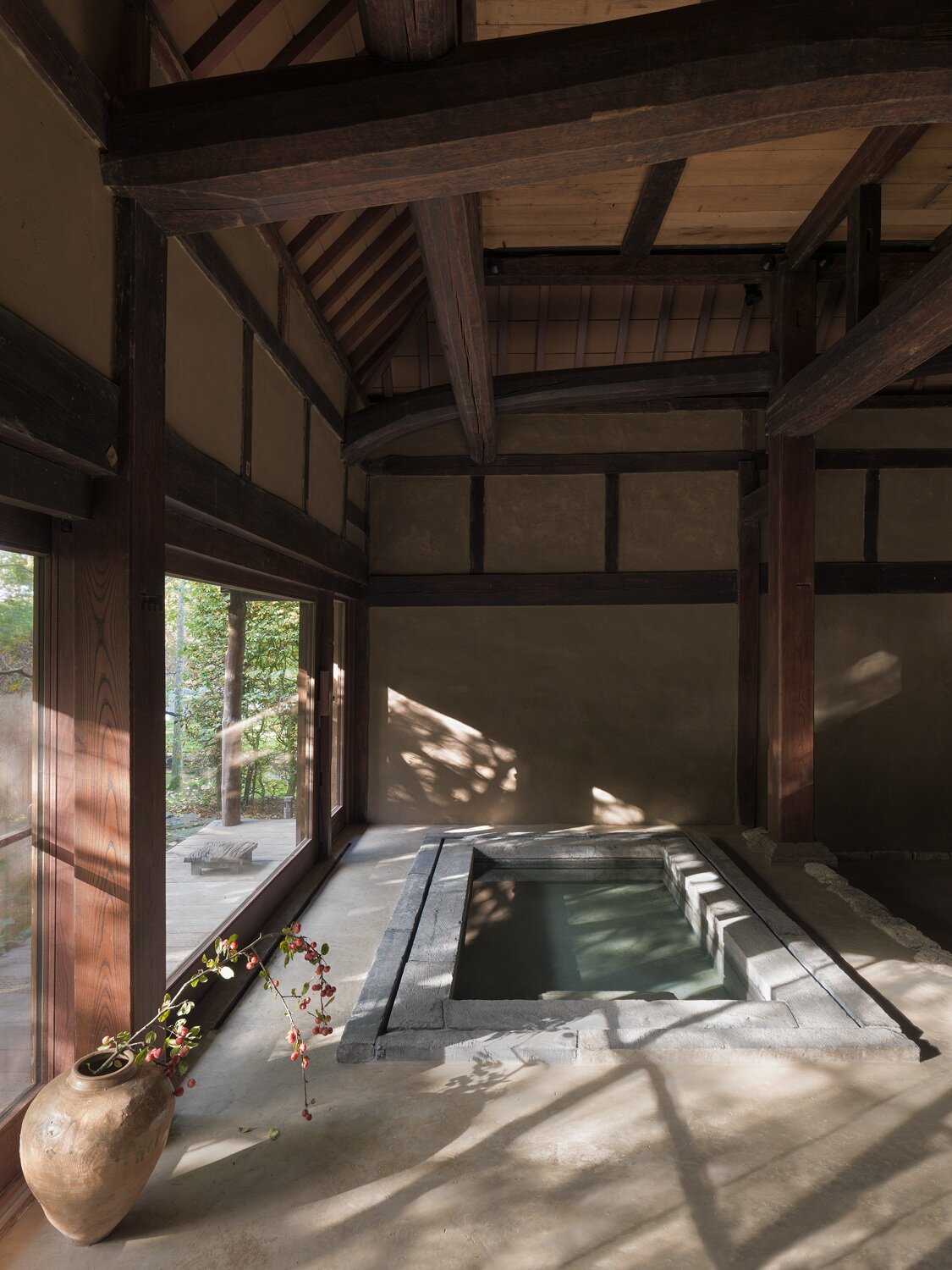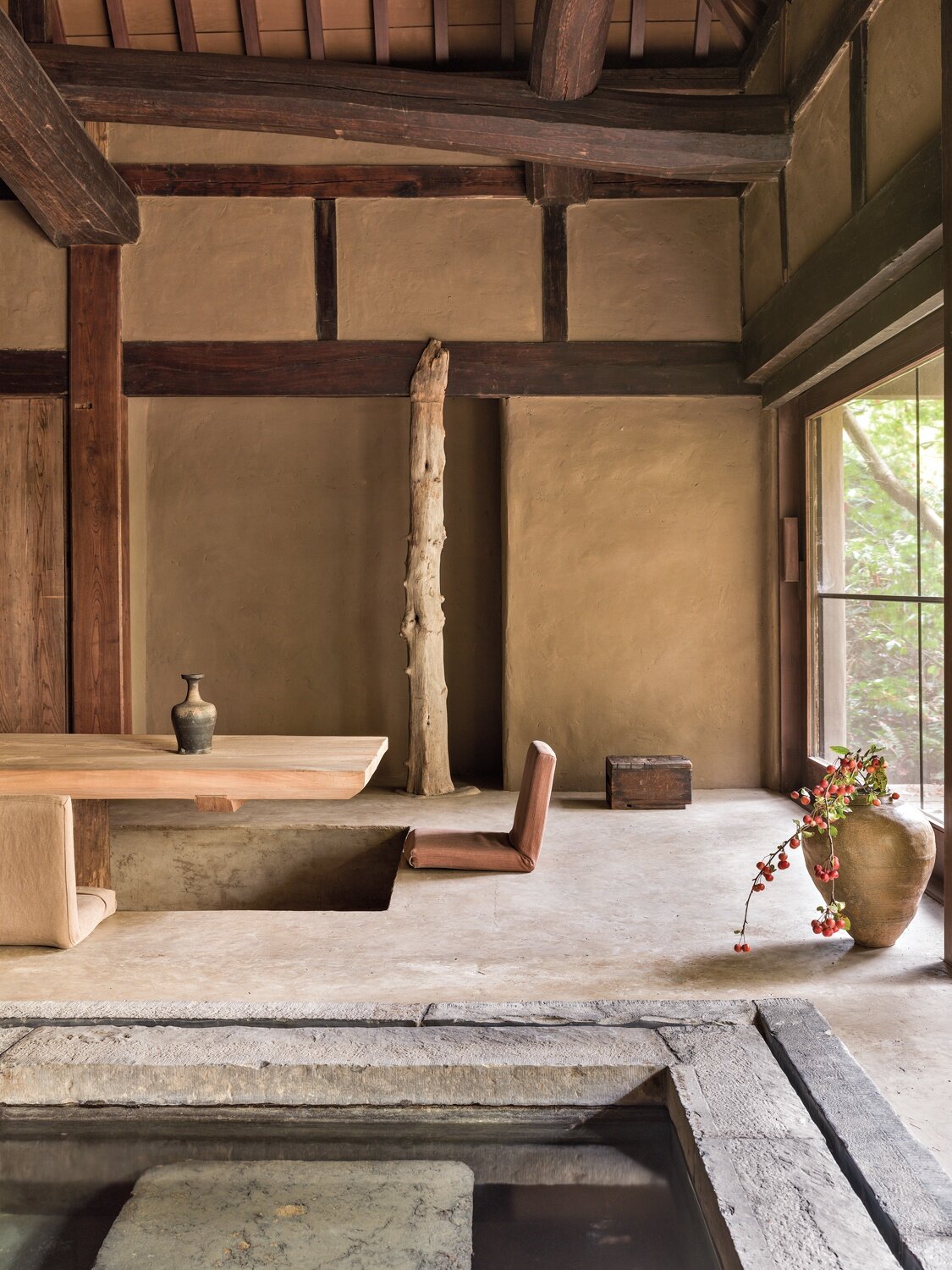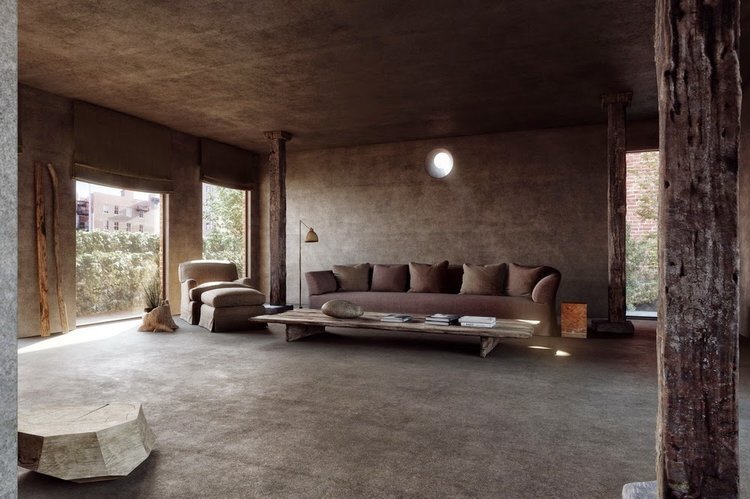AXEL VERVOORDT
“I’ve always wanted to live surrounded by the things I love in a personal space where I could invite clients into my world.”
1947 - now
Influences: Lucio Fontana, Eastern philosophies, Wabi-Sabi
Notable Clients: Calvin Klein, Kanye West, Robert de Niro, Bill Gates, Sting
Art dealer, curator, designer, antiquaire… Multi-hyphenate Axel Vervoordt was born in Antwerp in 1947 to a horse-dealer father and an antiques collector mother. From very early ages, he was exposed to the world of timeless beauty, which shaped his later vision and sense of style. With 50 years in the business, Vervoordt is one of the world’s most celebrated tastemakers, known for his minimal but sophisticated “Belgian Look”. A member of the AD100 Hall of Fame, he was hugely influential in the design world and became the most imitated designer of the last two decades by harmoniously mixing old and new and masterfully blending Eastern elements with Western designs. In his own words, he “mix(es) art and objects from different periods. We're all products of the past, but we must also take inspiration from the present. And we have a responsibility to build a new society for tomorrow.”
He was only 14, when he loaned money from his father and traveled to England alone to find and buy antiques. On his return, he managed to sell pieces to his parents’ friends but never thought of it as a potential career path. His father insisted that he should study a ‘real’ profession, so he went to study economics but left school early to do his national service in the army. He continued dealing art and antiques and eventually decided to turn his passion into business. At the age of 21, he followed his mother’s steps and bought eleven 16th century houses on Vlaeykensgang, a medieval alley in Antwerp, to save them from demolition and restore. It quickly turned into a hub for his antiques business, where he was dealing carefully selected and highly edited antiques by appointment only. It was also where he lived. Together with his wife, Axel created a warm and charming way of living with ‘purified’ interiors which attracted clients who were keen to have similar living spaces and asked him to design their homes. In a few years time, he was not only dealing art and antiques but also designing interiors and furnishings to complement his clients’ pieces.
15 years later, in 1984, Vervoordt and his family bought the Kasteel van’s-Gravenwezal, a medieval castle near Antwerp to live more alongside nature and also to have more space for their constantly expanding business. It took four years to renovate and create a carefully curated living space to showcase Vervoordt’s minimalist aesthetic and visual romanticism. The castle was featured in Architectural Digest’s October 1986 issue and since then, many fellow designers and clients, including Kanye West and Robert de Niro visited the castle to get a glimpse on Vervoordt way of living.
Axel Vervoordt’s philosophy “is a belief that a home should be a personal expression of your soul. It should represent the way you want to live, the ideas that define your tastes, perspectives, and connections to the world. The spaces where people share private experiences with family and friends should restore and give energy. ” With this belief, he creates timeless, restful spaces with refined interiors. As one of his clients stated, “he creates with his heart.” He has been fascinated with Eastern philosophy and sacred geometry that inspired him to create a distinct visual language. You can breathe in the air of eastern calmness even by just looking at the photos of his interiors. His designs are minimal, “almost no decor ” but they are always warm and soulful and the idea is that time is the real artist and it will make them more interesting and beautiful. He incorporates Japanese philosophy of wabi -sabi - acceptance of transience and imperfection - into his designs in the form of muted colours, natural materials, distressed plaster walls and bare boards. He defines his interiors as “harmonious living”. “I like things that are more understated, things that have a mystical power.” he says, “It looks poor but it’s very costly. It’s the opposite of what most people want, which is something that looks expensive but is cheap.”
For Vervoordt, it’s crucial to take the surrounding natural geography into account and all his design projects reflect on their unique setting. Natural elements such as wood, light and metal are always included in his designs and he likes to use shades of local earth to complement the surrounding nature - earthy tones of yellows, sand, browns, black and beige are completed with mellow wooden floors, rough-hewn beams and rich textures. He uses big, sculptural seating often covered in plain simple Belgian linen and carefully selected art and antique pieces complete the overall look.
I have to admit that Axel Vervoordt interiors are my favourites - they are simple but also astonishingly beautiful, proving us once again that less is more. His rooms are so effortless and serene that just looking at the photos gives me calm. As the man who put Belgium in the centre of design world, Alex Vervoordt continues to grow his art empire with his family business, Axel & May Vervoordt Foundation and carefully curated exhibitions.
Fun fact: In 1977, Vervoordt and his wife, May, got lost in the English countryside on their way to the Glyndebourne opera house and had to stop at a rural farmhouse for directions. An elderly owner of the house helped them with the directions, but he also showed the couple a lacquer Japanese sculpture, which Vervoordt bought on the spot. Apparently the sculpture is still being showcased in van ‘s-Gravenwezel castle’s library.
Books: Living With Light, Timeless Interiors, The Story Of A Style, Portraits of Interiors & Axel Vervoordt: Stories and Reflections
References:
1 - Axel Vervoordt
2 - Vogue Living
4 - Architectural Digest, 2005 August issue
5 - Inspired Design by Jennifer Boles
Images:
1 - Image by Jake Curtis for FT Magazine
2 - Image via Architectural Digest
3 - Image via Axel Vervoordt Company
4 - Left image via Axel Vervoordt Company & right image by Jake Curtis for FT Magazine
5 - Image by Rich Stapleton for Cereal Magazine
6 - Both images by Nikolas Koenig
7 - Image by Laziz Hamani from Axel Vervoordt: Portraits of Interiors
8 - Both images by José Manuel Alorda
9 - Image via Anniversary Magazine


